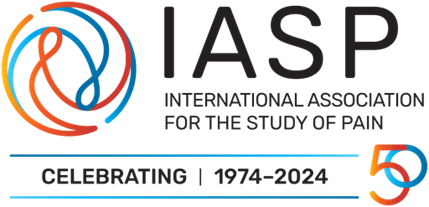About Pain
Everyone will have had some kind of pain during their life, this can be anything from a mild headache to an acute severe pain, for example from a broken bone. Most people would agree that pain is unpleasant and involves both a physical and emotional response.
In July 2020, ‘The International Association for the Study of Pain’, defined pain as:


Pain linked to an injury is easier to understand. For most people they associate pain with some kind of injury.
Pain can also be a warning of possible injury and help to protect us. For example when we touch something hot it hurts and that makes us withdraw our hand and reduce the risk of us getting burnt.
However sometimes the pain is not caused by an injury or a risk of one. In primary chronic pain the pain is creating a fake warning to the body without a known cause. This does not make the pain any less real. This is a bit like if a car alarm is going off when there is no one near the car. The alarm is still loud and annoying and may be disturbing you going about your day, but there isn’t a cause for the alarm. In the same way chronic pain can still cause severe impacts on the quality of someone’s life even without an underlying injury or risk of injury.
Understanding Pain
More Information
- Pain is always personal, it is affected by lots of things, including previous experiences and how we are feeling. If we are worried, anxious, angry, or feeling down our pain will be worse. If we are feeling happy and positive our pain can seem less and we are better able to cope with it.
- Pain is what a person says it is and this should be respected by anyone caring for the individual.
- Pain may have negative effects on how we go about our day to day lives. It can affect our ability to do work, our sleep patterns and over time can have a negative effect on our family and friends.
- Pain may have adverse effects on our social and mental well-being, this can become a cycle making the pain worse.
Pain signals are complex system involving our whole body. It is more than just a network of wires. The pain system also works to process the pain signals. All together they work like a very powerful computer.
Sometimes this computer system can go wrong. The messages get confused and the brain cannot understand the signals properly. It can lead to chronic or persistent pain, which can be very hard to repair.
Part of this process is linked directly with the emotional centres in the brain. This means how we are feeling has an effect on our pain. If we feel angry, depressed, or anxious, our pain will be worse.
The opposite is also true. If we are feeling positive and happy, our pain can seem to be less. We can cope much better.
It shows that pain is never “just in the mind” or “just in the body” – it is a complex mix involving our whole being and how our brain interpretation the signals. This mix can change from one day to the next.
Sometimes, pain can begin very small. But the signals quickly jump along the network and can last for hours, days or even years. This can lead to a long term, distressing problem which requires skill, time and patience to improve.
The way a pain signal jumps along the system is by the release of a chemical. These are called neurotransmitters, and over one hundred types have been discovered. The amount of chemical released is extremely small.
There are good neurotransmitters and there are bad neurotransmitters. The bad ones make the pain worse; the good ones can help block the pain.
Again, the way we feel, our emotions are involved. But doing something we enjoy, having a good laugh or exercising, we can strengthen our ‘good’ neurotransmitters and so limit our pain.
However, if we are depressed or moody, lack motivation and are not active we strengthen our bad neurotransmitters, and our pain gets worse.
More information about different types of pain can be read about here from the Faculty of Pain Medicine.